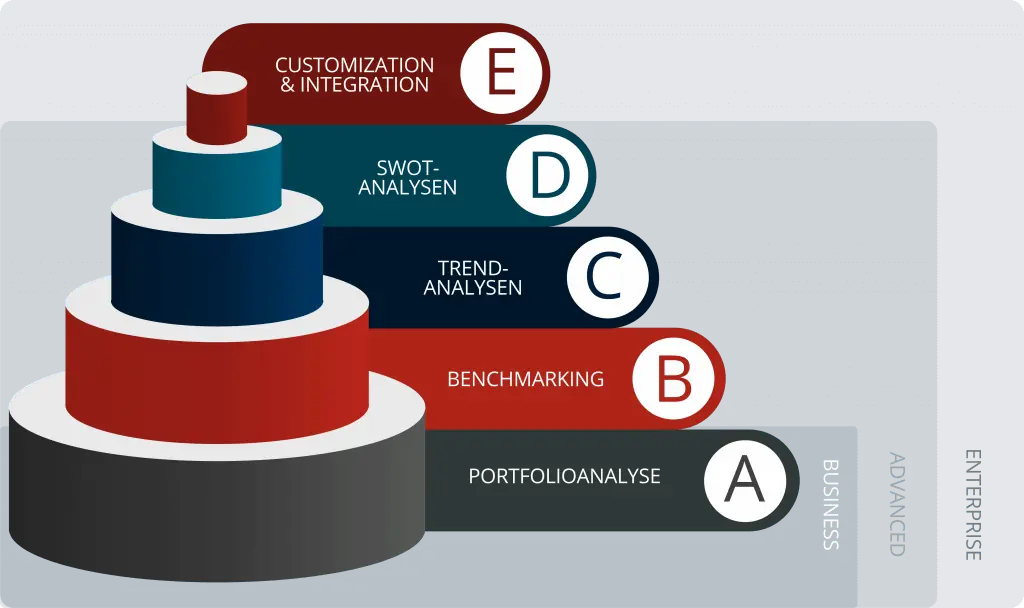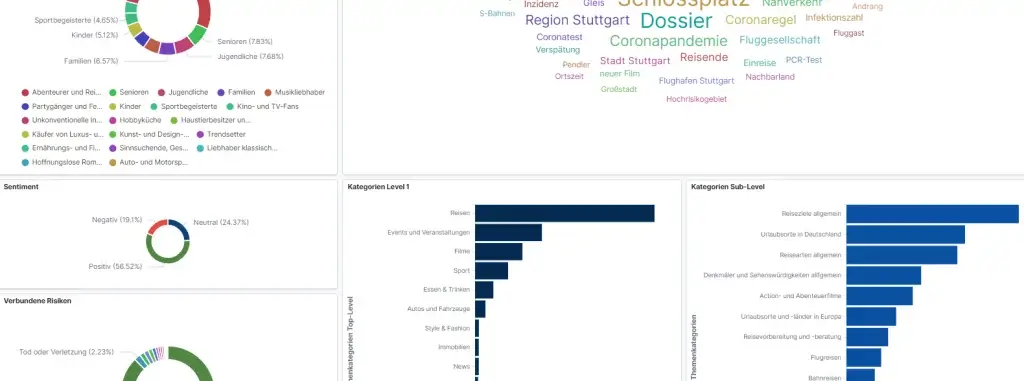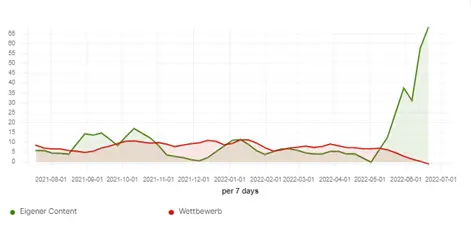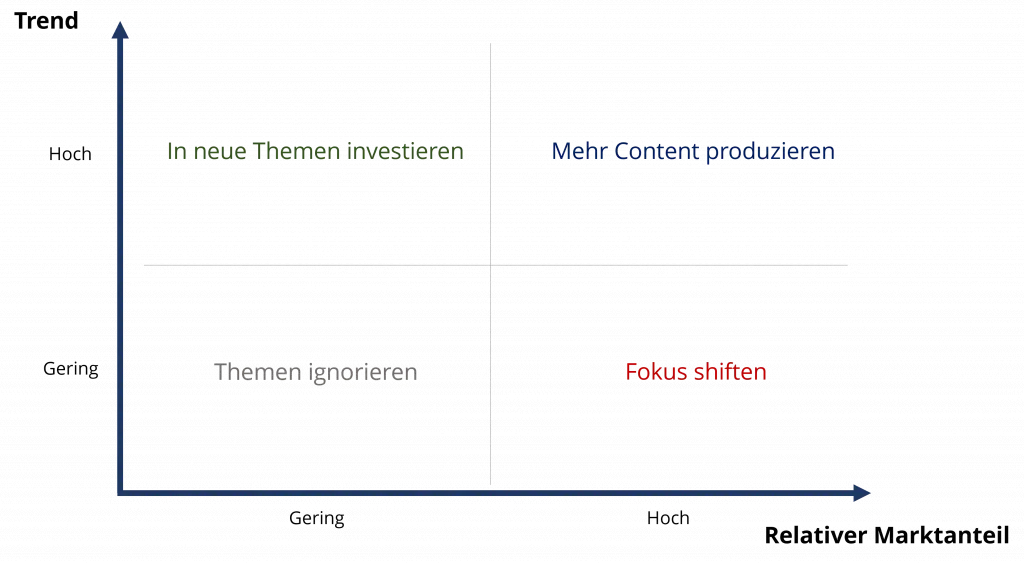|
|
CONTEXTCLOUD Part 1: Target Group-Optimized Publishing with AI
How to Optimally Address Your Target Groups and Inspire Them with Customized Content
CONTEXTCLOUD provides you with a data analysis platform that enables intelligent content audits, i.e. content portfolio analyses, and comprehensive competitive comparisons with the help of sophisticated artificial intelligence. In this article, we would like to show you how you can optimize your entire editorial process based on data and hand in hand with AI and why the analyses are now indispensable in order to produce relevant content and thus position yourself sustainably in the market.
The Challenge – Being on Trend and Staying on Trend
Trends are constantly evolving and so is your target group. This increases the pressure to be able to serve their ever-changing interests. The digital transformation has fundamentally changed the way publishers, companies and everyone else who writes and publishes content work. The digital world is becoming increasingly complex, competition is growing enormously and it has become a challenge to remain relevant at all.
A new area in digital marketing has grown out of this challenge: SEO, which is exclusively concerned with the best possible placement of content in search engines such as Google. However, the previous tools and approaches of this branch of marketing are slowly reaching their limits, as Google is increasingly using AI models to evaluate relevance in order to determine rankings. You can therefore only ensure your own digital survival by using the same tools in the field of artificial intelligence and natural language understanding. Because if you don’t, someone else will.
Strategy First – Creating a Content Strategy
The trigger and starting point for creating a content strategy is always the question of how your own target groups can be activated in the first place. Rapid fluctuation or crises in the market cause trends to change and therefore the agility with which you need to produce target group-specific content also changes.
The use of content analyses enables you to automate your publication processes and, by linking them with intelligently acquired data in the background, to achieve a permanent

Holding Up a Mirror – Portfolio Analysis
An essential part of developing a content strategy is the task of first gaining a comprehensive understanding of your own content. The perspective is crucial here: it is not about cataloging what content you have published so far, but primarily about how you and your content are perceived by your target groups. A portfolio analysis shows you exactly how your portfolio is currently structured, where your strengths lie and, more importantly, where your weaknesses lie in comparison with your competitors. The advantages of having this step carried out automatically by an AI are obvious: on the one hand, such a classification would usually take weeks or months due to the sheer mass of content, and on the other hand, the artificial intelligence always looks at the content objectively and thus creates honest comparability without being biased.
All your content is automatically read, understood and enriched with meaningful metadata by CONTEXTCLOUD’s intelligent AI models. However, this is not just classic metadata as you already know it, but also classifications, moods expressed in the text, target groups addressed and, above all, topics.

Knowing the Competition – Benchmarking
Another strategically decisive step is a systematic comparison of your own content with relevant competitors. Only those who know their competition inside out can position themselves correctly in the market. A competitive analysis is the cornerstone of any corporate strategic planning or (re)alignment. Benchmarking involves analyzing and classifying the content of all relevant competitors in addition to your own content.
MORESOPHY has created the first fully automated solution that does this reliably with the help of artificial intelligence.
For this purpose, the competitors’ content is processed and evaluated by the CONTEXTCLOUD crawlers. A benchmark analysis is carried out not only qualitatively, but also quantitatively with statistical calculations. This gives you an arbitrarily broad perspective on competitors and the market. The CONTEXTCLOUDanalyses standardize the content, allowing you to compare yourself with competitors of different sizes. With the automatic and powerful GAP analyses across entire sectors, you can find your sustainable sweet spot in the market. This allows you to turn your competitors’ weaknesses into your strengths.
Perceiving Changes – Trend Analysis

Based on the benchmarking, an analysis of the development of the topics and categories over time is carried out. A trend analysis provides information on the development of the content over a defined period of time. For example, you can derive directions in which you should expand your content in the future and identify target groups and subject areas that no longer play a major role in the market.
The CONTEXTCLOUD allows you to combine benchmark and trend analyses by comparing yourself with the competition over a certain period of time and thus compare your developments against each other.
Data-supported trend analyses must be included before every strategic decision in the editorial and publishing process in order to prevent costly misjudgments.

Making Decisions – The SWOT Analysis
You can systematically compare both the production of content in the market – including its development over time – and your own content production. By classifying the topics into quadrants and linking these with statistical trend calculations, CONTEXTCLOUD‘s SWOT analysis provides specific recommendations on which content you should best invest in, taking into account your own strengths, weaknesses, those of the competition and the market, as well as the trendiness of individual topics and categories.

The development of a content strategy is more than ever the prerequisite for successful target group-optimized publishing – whether in professional media companies or for the purpose of digital marketing. Artificial intelligence will not replace humans in the long term, but it does provide the decisive building block for differentiating oneself from the competition thanks to well-founded, holistic analysis and evaluation of one’s own positioning.
More articles from Data-Driven Business

|
|


|
|
